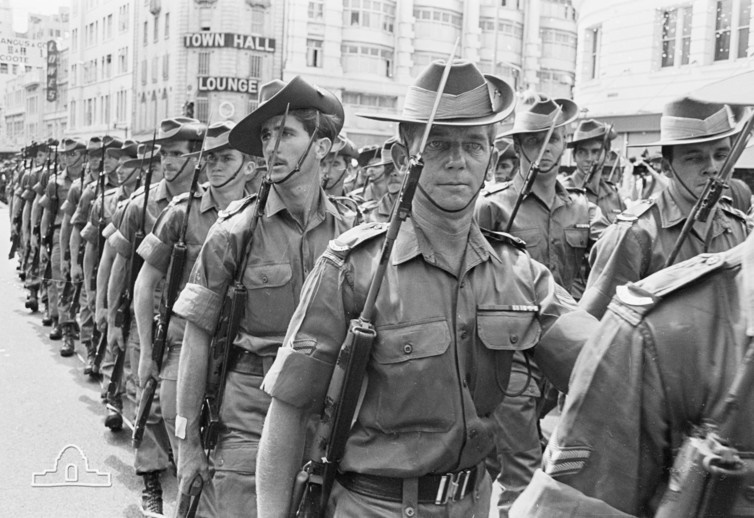Preamble
The Australian Computer Society (ACS) was formed 50 years ago, when the various state computer societies joined forces.
To mark the occasion, the ACS has initiated a heritage project to honour the many individuals who have contributed to the growth of the ICT profession in Australia.
At the heart of the project is a history of computing in Australia. It is not just a history of the ACS, but the history of a profession.
Australia has the longest computing history of any country, excepting the US and the UK, and CSIRAC in the Museum of Victoria is the oldest computer still in existence.
Chapter 18: Computing in the Australian Government
The first serious use of computing in the Australian Government – outside of research agencies like CSIRO and the WRE, and the universities – was in the Department of Defence and its related departments (Army, Navy and Air Force were separate departments until 1973). The driving force was John Ovenstone, who had overseen the operations of WREDAC at the Weapons Research Establishment in Salisbury in South Australia.
In 1958, Ovenstone -- a dynamic individual – convinced the Department of Defence to conduct a feasibility study on the use of computers for automating the administrative functions of the four Defence departments. The key event was a presentation Ovenstone gave to an Australia Institute of Management meeting in Mittagong in May 1958, which was attended by William Gleason, a senior officer on the Public Service Board.
Gleason was impressed with the possibilities of computing (then called ‘automatic data processing’) in the Commonwealth Government, and persuaded Cabinet to allow the Public Service Board to explore the prospects.
The first step was the introduction of computers to Defence. Ovenstone was appointed to the new position of Controller of Automatic Data Processing, at the level of First Assistant Secretary, and set about building a team to conduct a study of how computers could be best used by the defence departments, which had complex technical and administrative requirements.
Ovenstone planned to use standard, commercially available hardware and software, and to write the necessary applications in a high-level language rather than the machine code which was still common at the time.
Ovenstone’s feasibility study was carried out over 14 months in 1960 and 1961, and produced a report of 12 volumes. It recommended the establishment of a purpose-built computer at the Department of Defence’s headquarters at Russell Hill in Canberra, with a dedicated network to various defence facilities around Australia.
The Government sat on the proposal for a year. In August 1962 Australia committed is first troops to the Vietnam War, and later that year implementation of Ovenstone’s plan began, with two Honeywell H800 computers running the company’s high-level programming language called FACT (Fully Automated Compiling Technique), which was to be a major influence on the development of COBOL.
Implementation was slow, hampered by a lack of people with the necessary computer skills, but by the time Ovenstone left the Department in 1964 to take up the inaugural Professorship of Computing Sciences at the University of Adelaide, the program was well advanced. The H800s were upgraded to H1800s and later replaced by Sperry Univac machines.
There was also considerable activity elsewhere in the Commonwealth Government. Because of Gleason’s activities within the Public Service Board, on 2 March 1962 the Board established two standing committees – the Inter-Departmental Committee on Automatic Data Processing and the Policy Committee on Electronic Data Processing.
The Policy Committee met only a few times, with its main role being the endorsement of CSIRO’s computing activities, but the Inter-Departmental Committee (IDC) was to prove extremely influential in moving the Government into the computing age. It had no legislative power, but its recommendations carried much weight.
The IDC comprised representatives from the Public Service Board (Gleason himself, as Chairman), Treasury, Defence, the Post Master General’s Department, with other departments attending as necessary. It was not disbanded until 1981.
One of the first actions of the IDC in 1960 was to conduct an extensive survey of the prospective use of computers for administrative work in the Australian Public Service.
The survey teams identified departments with functions suited to computer processing. They also examined the data flow between such departments, produced projections of what sorts of computers would be needed and how much they would cost, and where they would need to be deployed. They paid special attention to training requirements.
The IDC was instrumental in the May 1963 selection of Control Data computers by the Commonwealth Bureau of Census and Statistic (CBSC), which became the biggest user of computers in the Public Service. Other early users (by 1966) outside of CSIRO and Defence were the Atomic Energy Commission, the Survey Branch of the Department of the Interior, the Postmaster-General’s Department and the Commonwealth Actuary. Qantas and the Commonwealth Bank, both at that time government-owned, were also early users, as was the Reserve Bank.
The CBSC, like the CSIRO, developed its own home-grown network to connect its sites, in each state capital, to Canberra. The CBSC’s computing facilities were also used by many other departments before they acquired their own machines, notably the departments of Health, Social Security, Taxation, Treasury, and the Superannuation and Public Service Boards.
Of necessity, the CBSC had to develop many of its own data analysis tools. It built an application called FORDAPP to improve upon FORTRAN’s limited I/O capabilities. But its most significant achievement was the creation of an application called Table Generator, developed to help handle the enormous workload of the 1966 census.
Table Generator was a great success and was subsequently adopted by the US Bureau of Labour Statistics as the basis for its Tabulation Programming Language, which was widely used by census bureaus around the world.
Usage of computers quickly spread throughout the public service. By 1966, nine departments and nine statutory authorities had computing equipment installed, employing around a thousand specialist staff.
Previously published:
Chapter 17: Trevor Pearcey and the birth of CSIRONET
Chapter 16: Enter the minicomputer – DEC comes to Australia
Chapter 15: The IBM S/360 in Australia
Chapter 14: IBM redefines the computer industry
Chapter 13: Control Data Australia (part II)
Chapter 12: Control Data Australia (part I)
Chapter 11: The Australian Computer Society
Chapter 10: Five Computer Societies
Chapter 9: Australian made, Australian designed
Chapter 8: Australia's Computer Industry in 1962
Chapter 5: SILLIAC and the Snowy Mountains Scheme
Chapter 3: Harry Messel and the birth of SILLIAC
Chapter 2: The first Australian Computer Conference
Chapter 1 -The start of Australia’s computing history
Veteran ICT journalist Graeme Philipson is researching and writing the Heritage Project book, which is due for release on the 50th anniversary of the formal incorporation of the ACS, on 3 October 2017.
The project also involves the creation of a ‘virtual museum’, cataloguing hardware and other artefacts, and collecting and curating documents on the history of the industry, including oral histories of as many people as possible.
Please get in touch with Graeme if you would like to contribute, at [email protected]
Do you have early memories of the ICT industry in Australia? Help us make history by sending us your story! Record or write your memories to be included in our historic ACS Heritage Project. Details here.










